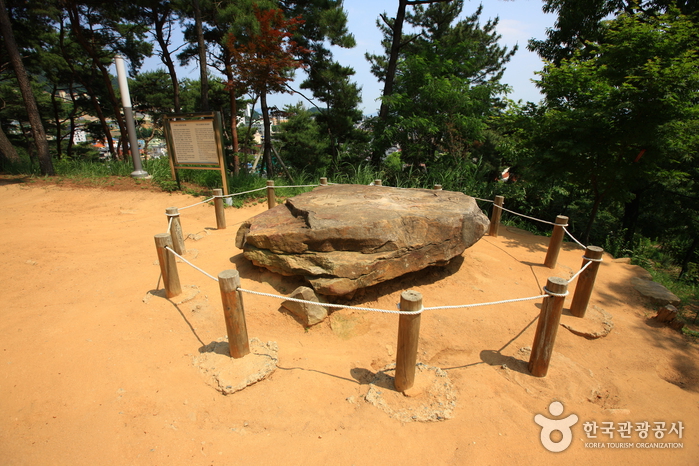Goseong Dinosaur Museum (고성공룡박물관)
Goseong Dinosaur Museum (고성공룡박물관)
 – Homepage
– Homepage
museum.goseong.go.kr
Goseong Dinosaur Museum is located in the Sangjogam Park, which is renowned as the world’s largest dinosaur footprint fossil site. Sangjogam is where the first dinosaur footprints were discovered in South Korea. The museum features five exhibition halls and a theater. Visitors can see genuine egg fossils of Oviraptor and Protoceratops, as well as dinosaur models. The museum is connected to the Sangjogam Beach, where dinosaur footprints are preserved.
– Address : 618 Jaranman-ro, Hai-myeon, Goseong-gun, Gyeongsangnam-do
※ Presentation Information
– Information and Guides
+82-55-670-4451
– Parking
Available
– Parking Fee
Two-wheeled vehicle: 500 won
Small vehicles (fewer than 15 seats): 2,000 won
Large vehicles (more than 15 seats): 3,000 won
– Day Off
Mondays (Closed the following day if Monday falls on a public holiday), New Year’s Day, Day of Seollal (Lunar New Year’s Day) & Chuseok (Korean Thanksgiving Day)
– Usage Fee
Adults 3,000 won / Teenagers 2,000 won / Children 1,500 won
– Operating Hours
March-October 09:00-18:00 / November-February 09:00-17:00 (Last admission: 1hr before closing)
– Scale
Land area: 7,400 ㎡
Building area: 3,441.77 ㎡
Exhibition area: 1,447.58 ㎡
– Collections Status
Genuine dinosaur artifacts & copies, general fossils, dinosaur models, etc.

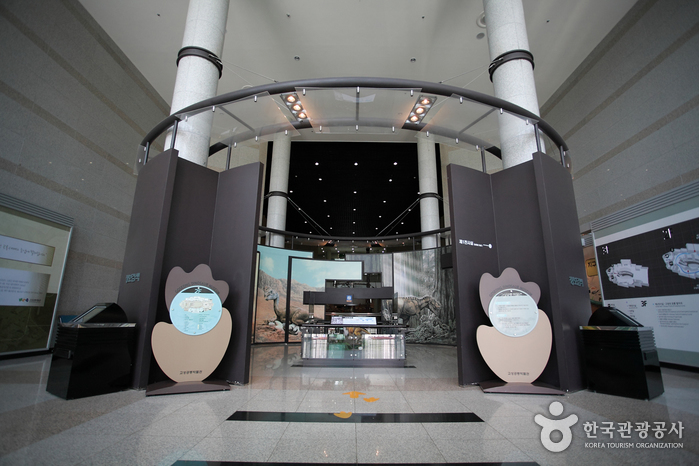
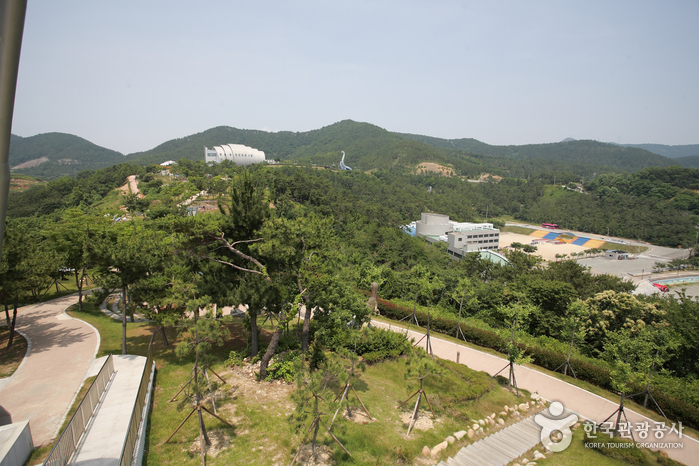

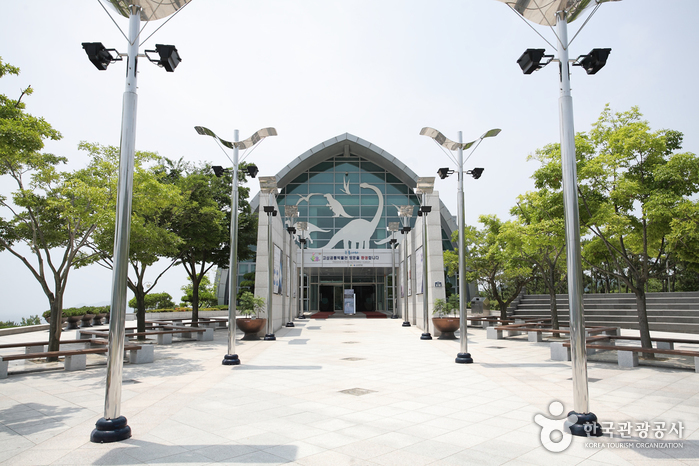
◎ Nearby Tourism Infobox
⊙ Sangjogam County Park (상족암군립공원)
View detailed guide on Korea Trip Guide →
– Homepage
visit.goseong.go.kr
– Tel
+82-55-670-4461
The breathtaking view of the South Coast can be seen at a glance from Sangjogam County Park. The glittery surface and towering cliffs create a spectacular backdrop. Clear footprints of dinosaurs that lived during the Cretaceous Period of the Mesozoic Era remain extending over the coast around Sangjogam region, and thus the area was designated Goseong-gun Gosi No. 20. on November 10, 1983.
The beach in front of the Youth Center contains shingles worn down by the tide and a precipitous wall of stratified rocks can be seen beyond the wide bedrock of dinosaur footprints. The rocks are named after the table leg-shaped stone caves such as “Ssangjok” or “Ssangbal”. Many oddly shaped rocks inside the caves have their own folktales.
According to one tale, fairies from heaven came down to the Sangjokgul Cave to weave clothes out of brocade for the King of Heaven, and bathed in the Seonnyoetang Pond. The shape of a loom and a puddle still exist. Nearby the cave, Chotdaebawi Rock and Byeongpungbawi Rock create scenery beyond description and leisure cruise boats toss up gentle sea waves. Naturally, the park continuously attracts numerous tourists in all seasons.
Also, many are drawn to the mysterious dinosaur footprint fossils at Sangjogam. The site is recognized as one of three major dinosaurs sites in the world, along with those in Brazil and Canada. The footprints belong to dinosaurs familiarized by the popular movie, ‘Jurassic Park’, such as Brontosaurus, Brachiosaurus, Allosaurus and Naranosaurus. It has been designated Natural Monument No. 411, as dinosaur footprints are valuable resources in discovering the uncovered mysteries of life before the appearance of mankind.
⊙ Fossil Dinosaur and Bird Footprints of Goseong (고성 덕명리 공룡과 새발자국 화석 산지)
View detailed guide on Korea Trip Guide →
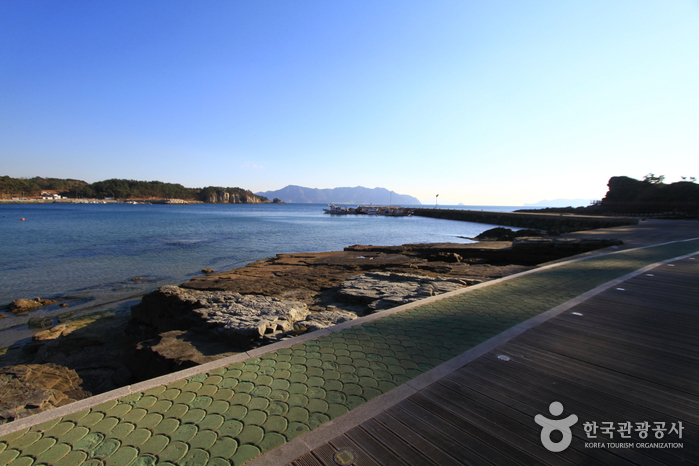
– Homepage
visit.goseong.go.kr
– Tel
+82-55-670-2231
The ancient fossil site at Deokmyeong-ri, Goseong-gun, is one of the largest Cretaceous dinosaur fossils sites in the world. It is the home of a vast amount of footprints from a variety of ancient species, as well as the largest Mesozoic bird footprint found to date. The formations from many different prehistoric eras make it a precious site for academic research on the life patterns of dinosaurs, the ancient natural environment and formations, the distribution of sea and land, and the evolution of bird species. It is also a great tourist attraction that offers magnificent scenery, including a coastline dotted with beautiful Hallyeosudo islets, unique rock formations and cliffs, and sea caves.
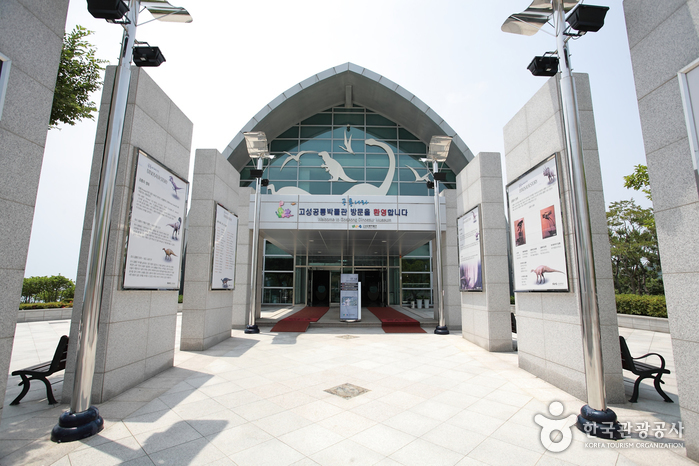
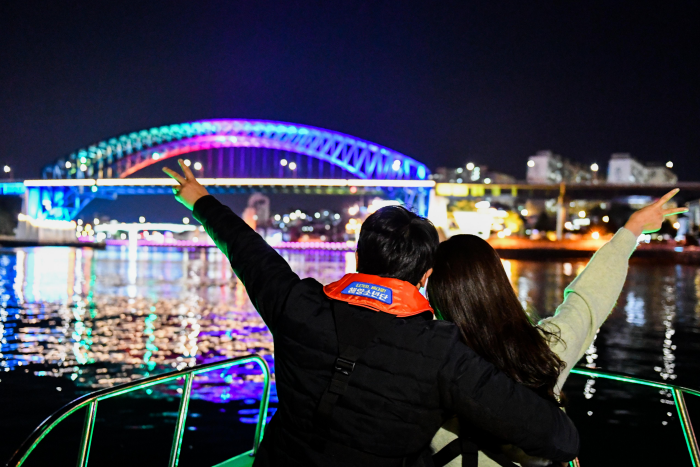
![Waypoint Pool Villa [Korea Quality]웨이포인트 풀빌라[한국관광 품질인증]](https://ktrip.blogsailing.com/wp-content/uploads/2025/11/2949128_image2_1.jpg)
![Coach [Tax Refund Shop] (코치)](https://ktrip.blogsailing.com/wp-content/uploads/2025/11/2886260_image2_1-768x576.jpg)
